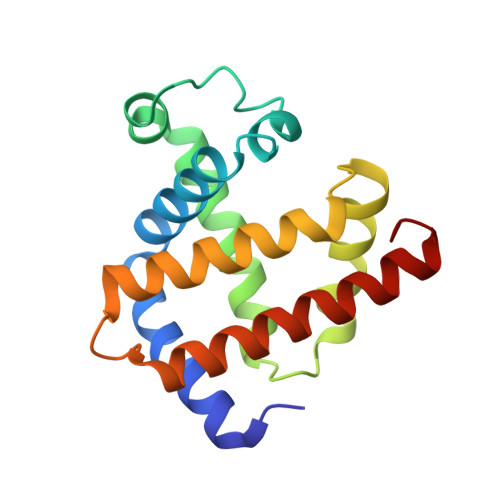Enhanced visibility of hydrogen atoms by neutron crystallography on fully deuterated myoglobin.
Shu, F., Ramakrishnan, V., Schoenborn, B.P.(2000) Proc Natl Acad Sci U S A 97: 3872-3877
- PubMed: 10725379
- DOI: https://doi.org/10.1073/pnas.060024697
- Primary Citation of Related Structures:
1CQ2 - PubMed Abstract:
Although hydrogens comprise half of the atoms in a protein molecule and are of great importance chemically and structurally, direct visualization of them by using crystallography is difficult. Neutron crystallography is capable of directly revealing the position of hydrogens, but its use on unlabeled samples faces certain technical difficulties: the large incoherent scattering of hydrogen results in background scattering that greatly reduces the signal to noise of the experiment. Moreover, whereas the scattering lengths of C, N, and O are positive, that of hydrogen is negative and about half the magnitude. This results in density for hydrogens being half as strong and close to the threshold of detection at 2.0-A resolution. Also, because of its opposite sign, there is a partial cancellation of the hydrogen density with that from neighboring atoms, which can lead to ambiguities in interpretation at medium resolution. These difficulties can be overcome by the use of deuterated protein, and we present here a neutron structure of fully deuterated myoglobin. The structure reveals a wealth of chemical information about the molecule, including the geometry of hydrogen bonding, states of protonation of histidines, and the location and geometry of water molecules at the surface of the protein. The structure also should be of broader interest because it will serve as a benchmark for molecular dynamics and energy minimization calculations and for comparison with NMR studies.
- Biology Department, Brookhaven National Laboratory, Upton, NY 11973, USA.
Organizational Affiliation:

















